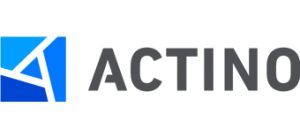callas software, market leader for automated PDF quality control and archival solutions, today releases a major update for its pdfToolbox product line: pdfToolbox 9. The new version enhances the power of variables and integrates completely new technologies for the large format printing, label and packaging markets. In addition it has support for CxF color data in PDF and integrates usability improvements for zooming and wireframe viewing.
pdfToolbox 9 extends functionality into job finishing
„pdfToolbox has earned its credit in the most demanding preflight and correction phases of workflows“, explains Dietrich von Seggern, Managing Director of callas software. „However, in the last years it is more and more used as a job preparation tool, a full pre-press in-a-box. With pdfToolbox 9 it now extends its functionality towards the different finishing operations that are necessary to prepare a PDF before it heads off to the RIP. Many of the new features dramatically enhance the possibilities of pdfToolbox for the large format printing, label and packaging markets for example. Judging by the requests we received from customers who have seen these new features at drupa, people are thrilled with this direction.“
Better support for spot colors in PDF with CxF based workflows
While PDF files contain enough information about spot colors to show a good screen preview, more complex operations such as correct color proofing or accurately converting spot colors to CMYK are more challenging. By storing CxF (color exchange format, ISO 17972-4) data in the PDF file, much better results can be obtained. pdfToolbox 9 identifies whether a file contains CxF data, it can display its contents and allows for checking for the presence of CxF information during preflight. It is also possible to check whether the CxF information works for the spot colors in the PDF file. Additionally, CxF data can be embedded in PDF as well.
Viewer improvements
For customers working with pdfToolbox Desktop, being able to accurately view the content of PDF documents and examine their structure is important. For this reason, pdfToolbox 9 implements a better zooming function and allows to show files in wireframe mode. Filtering out different object types is built in; this allows you to hide images and see if there are any objects behind them for example.
Large format finishing features
Large format printers often work with many different product types, ranging from picture prints, banners, signs, flags to huge jobs such as billboards. Those different product types usually require different job finishing operations. pdfToolbox Desktop 9 now features a dedicated large format print section exactly for this. White space and bleed can be added to the PDF file, additional finishing layers such as opaque white or varnish inks can be added across the whole file or only in certain areas, grommet marks can be distributed around the trim box and for very large jobs, tiling (the creation of a number of smaller, printable, pieces) is supported as well. With pdfToolbox Server all these tasks can be automated. Being able to perform these tasks before the RIP process, offloads the printer operator to deal with it last minute. For customers integrating pdfToolbox technology in their website, it makes it extremely easy to include final production and finishing views of the job into an online approval workflow.
Power Shapes: turn any shape into an extra separation a die-line
PDF files that match the right output standard are not always ready for production. They might be missing an undercover white, a varnish or a die-line. Often these elements need to be manually added by a pre-press operator. In pdfToolbox 9, the new shapes feature allows to detect vector or bitmap elements and turn them into separate “shapes”. Those shapes then can be painted with an extra ink, or traced with a line, or used as clipping mask. Adding white wherever (non-white) objects appear on the page? Possible. Adding varnish on selected objects such as images or on the whole trim box? Possible. Creating a proof version for the customer by clipping using the die-line in the document? Of course. The shapes technology is extremely flexible and an excellent addition for the LFP, label and packaging markets.
Power Processing for even more dynamic workflows
pdfToolbox was the first PDF technology to introduce variables for dynamic PDF processing. With the introduction of Process Plans, callas was also the first to allow users to build conditional processing steps without the need of any other production automation tools. In pdfToolbox 9 any function in a Process Plan can now be controlled and made dynamic using variables. But it doesn’t stop just there. Now pdfToolbox also allows for building even more powerful workflows by integrating Javascript support into variables. As such, it becomes possible to calculate with them and extract information from the PDF file that is being processed. Taking part of the file name and adding it as the value of a barcode? Easy with the pdfToolbox integrated barcode fix-up and a variable with a line of Javascript. Adding information from the XMP metadata in the PDF document in the gutter of the document? Again easy to do. And because variables can refer to other variables used in a profile, more intelligent profiles can be built. In large format printing for example, customers can build a profile that has the viewing distance of a job as input and then calculates all necessary limits for text sizes and resolution minima automatically.

